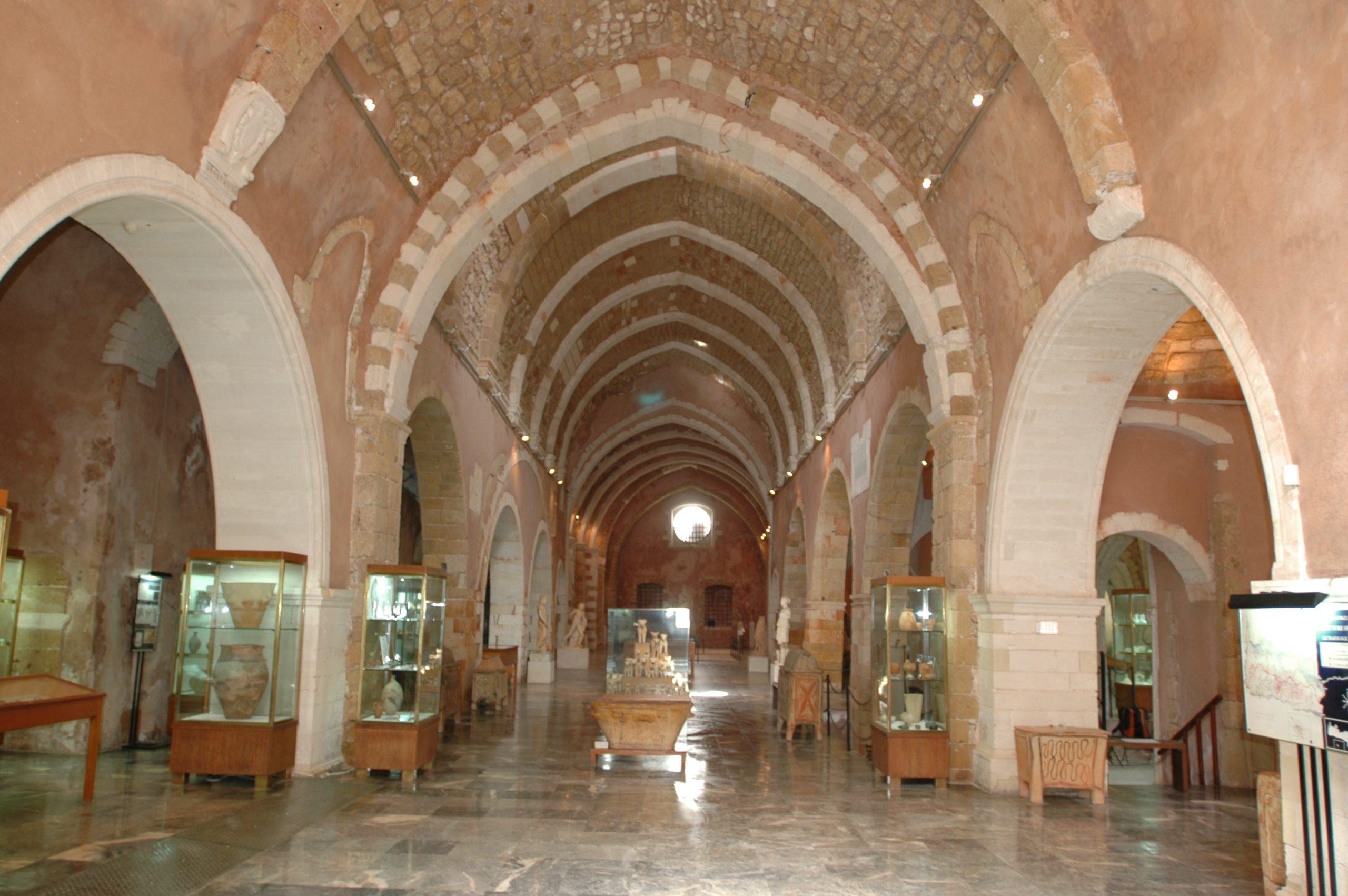Αρχηγείο Βενιζέλου / Στρατηγείο Κινήματος Θερίσου

Έτσι ονομάστηκε το αρχηγείο της Επαναστατικής Συνέλευσης του 1905 στο Θέρισο, το οποίο οργάνωσε την ομώνυμη επανάσταση ενάντια στην αυταρχική διακυβέρνηση του Ύπατου Αρμοστή Γεωργίου. Σήμερα το κτίριο έχει μετατραπεί σε μουσείο, στο οποίο εκτίθενται όπλα και άλλα αντικείμενα εκείνης της περιόδου, καθώς και τεκμήρια της επαναστατικής δράσης του Ελευθερίου Βενιζέλου.
Το ρολόι του Κήπου

Το Ρολόι ορθώνεται στη βορειοανατολική πλευρά του Κήπου και αποτελεί ένα από τα πιο χαρακτηριστικά νεώτερα μνημεία της πόλης. Κτίσθηκε την περίοδο 1924-1927 σε σχέδια του Δ. Κολλάρου, έχει τριμερή διάρθρωση και η στέγη του διαμορφώνεται σε κυκλικό περίπτερο. Σήμερα έχει συνδεθεί άρρηκτα με την ιστορική διαδρομή του Κήπου και αποτελεί σύμβολο και αναπόσπαστο κομμάτι του.
Βενιζέλειο Ωδείο

Το Βενιζέλειο Ωδείο Χανίων βρίσκεται στην οδό Νικηφόρου Φωκά και στεγάζεται σ’ ένα ιδιόκτητο νεοκλασικό κτίριο που θεμελιώθηκε το1931 με δαπάνη της Έλενας Βενιζέλου. Διαθέτει αίθουσα θεάτρου, με σκηνή και εξώστη, χωρητικότητας 300 περίπου θέσεων και ανήκει στο “Σύνδεσμο για τη διάδοση των Καλών Τεχνών στην Κρήτη”. Σήμερα φιλοξενεί το ΔΗ.ΠΕ.ΘΕ. Κρήτης και τη μικτή Χορωδία Χανίων.
Ναυτικό Μουσείο Κρήτης

Βρίσκεται στην είσοδο του φρουρίου Φιρκά, στην Ακτή Κουντουριώτη. Ιδρύθηκε το 1973 και αποτελεί το δεύτερο Ναυτικό Μουσείο στην Ελλάδα τόσο από πλευράς παλαιότητας όσο και εκθεμάτων.
Κουμ Καπί

Βρίσκεται έξω από τα ανατολικά τείχη της παλιάς πόλης των Χανίων και πήρε το όνομά της από την ομώνυμη βενετσιάνικη πύλη, την «Πόρτα της Άμμου» (Kum Kapisi στα τουρκικά). Η περιοχή αυτή φιλοξενούσε από τα μέσα του 19ου αιώνα ένα συνοικισμό αράβων αχθοφόρων και εργατών, των Χαλικούτηδων. Σήμερα αποτελεί ένα σύγχρονο στέκι ψυχαγωγίας και διασκέδασης […]
Προφήτης Ηλίας – Τάφοι Βενιζέλων

Έξω από την ανατολική πλευρά της πόλης, στη θέση Φρούδια, βρίσκεται ο λόφος του Προφήτη Ηλία με την ομώνυμη εκκλησία.
Αρχαιολογικό Μουσείο Χανίων

Το Αρχαιολογικό Μουσείο Χανίων στεγάζεται από το 1962 στη μονή του Αγίου Φραγκίσκου των Φραγκισκανών. Περιλαμβάνει ένα πλούσιο υλικό, το οποίο καταγράφει την ιστορική πορεία του νομού από την προϊστορική ((3η και 2η χιλιετία π.Χ) μέχρι την ρωμαϊκή περίοδο (3ος αιώνας μ.Χ).
Η Εκκλησία της Ευαγγελίστριας

Η εκκλησία της Ευαγγελίστριας στη Χαλέπα Χανίων θεμελιώθηκε το 1908 στη θέση των παλιών στάβλων του Οθωμανικού Ιππικού και αποπερατώθηκε τον Αύγουστο του 1923 με χρήματα από εράνους.
Εκκλησιαστικό Λύκειο Άγιου Ματθαίου

Βρίσκεται στην περιοχή «Φρούδια» Ακρωτηρίου και υπάγεται στην ενορία του Προφήτη Ηλία.
Ιερός Ναός Αγίου Νέστορα Κεραμειά

Ο ναός του Αγίου Νέστορα βρίσκεται στον οικισμό Κατοχώρι του πρώην Δήμου Κεραμειών και η ίδρυσή του τοποθετείται χρονολογικά στην όψιμη Ενετοκρατία. Αποτελεί χαρακτηριστικό δείγμα δυτικής εκκλησιαστικής αρχιτεκτονικής με ύστερο γοτθικό χαρακτήρα.


